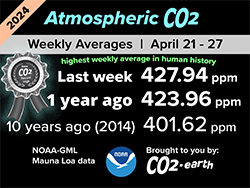Energy NFT
Energy Revolution — The Integration of Blockchain and NFTs in the Energy Sector
Welcome to Hoken Tech
Blockchain technology and Non-Fungible Tokens (NFTs) are revolutionizing various sectors, including the energy sector where blockchain, known for its transparency and security, is transforming the way energy is traced, exchanged, and consumed.
Meanwhile, various NFTs are opening new opportunities for the certification and exchange of renewable energy and carbon credits.
Blockchain in the Energy Sector
Blockchain is a decentralized and immutable digital ledger that allows transactions to be recorded securely and transparently. In the energy sector, blockchain is finding several applications:
Energy traceability: Blockchain can be used to trace the origin of energy, ensuring that it comes from renewable sources. This is particularly useful for companies that wish to demonstrate their commitment to sustainability.
Smart contracts for energy supply: Blockchain-based smart contracts can automate the energy supply process, reducing costs and increasing efficiency.
Peer-to-peer payment systems: Blockchain allows energy exchange between producers and consumers directly, without the need for intermediaries.
NFTs in the Energy Sector
Remember that these NFTs are unique digital tokens that represent ownership of a specific asset. In the energy sector, these NFTs can be used for:
Certification of renewable energy: These NFTs can be used to certify that the energy produced comes from renewable sources, providing a secure and transparent way to demonstrate sustainability.
Management and exchange of carbon credits: These NFTs can represent carbon credits, which can be exchanged between companies to offset carbon emissions.
Incentives for the production and consumption of clean energy: These NFTs can be used to provide incentives for the production and consumption of clean energy, for example, through reward programs.
Challenges and Opportunities
Despite the potential, the integration of blockchain and NFTs in the energy sector also presents several challenges. These include the need for standardization, technical complexity, and regulatory barriers.
However, there are also several future opportunities. For example, blockchain and NFTs could play a key role in the transition towards a more decentralized and sustainable energy system.
Conclusion
In conclusion, blockchain and NFTs are opening new opportunities in the energy sector, helping to promote transparency, efficiency, and sustainability.
Despite the challenges, the potential of these technologies to transform the energy sector is enormous.
nft, hoken tech, blockchain, cryptoart, eos, nft art, artificial intelligence, ai, watch authentication, crypto artist, nfts, web3, nft game, web3 game, videogame, nft distributor, videogame blockchain







